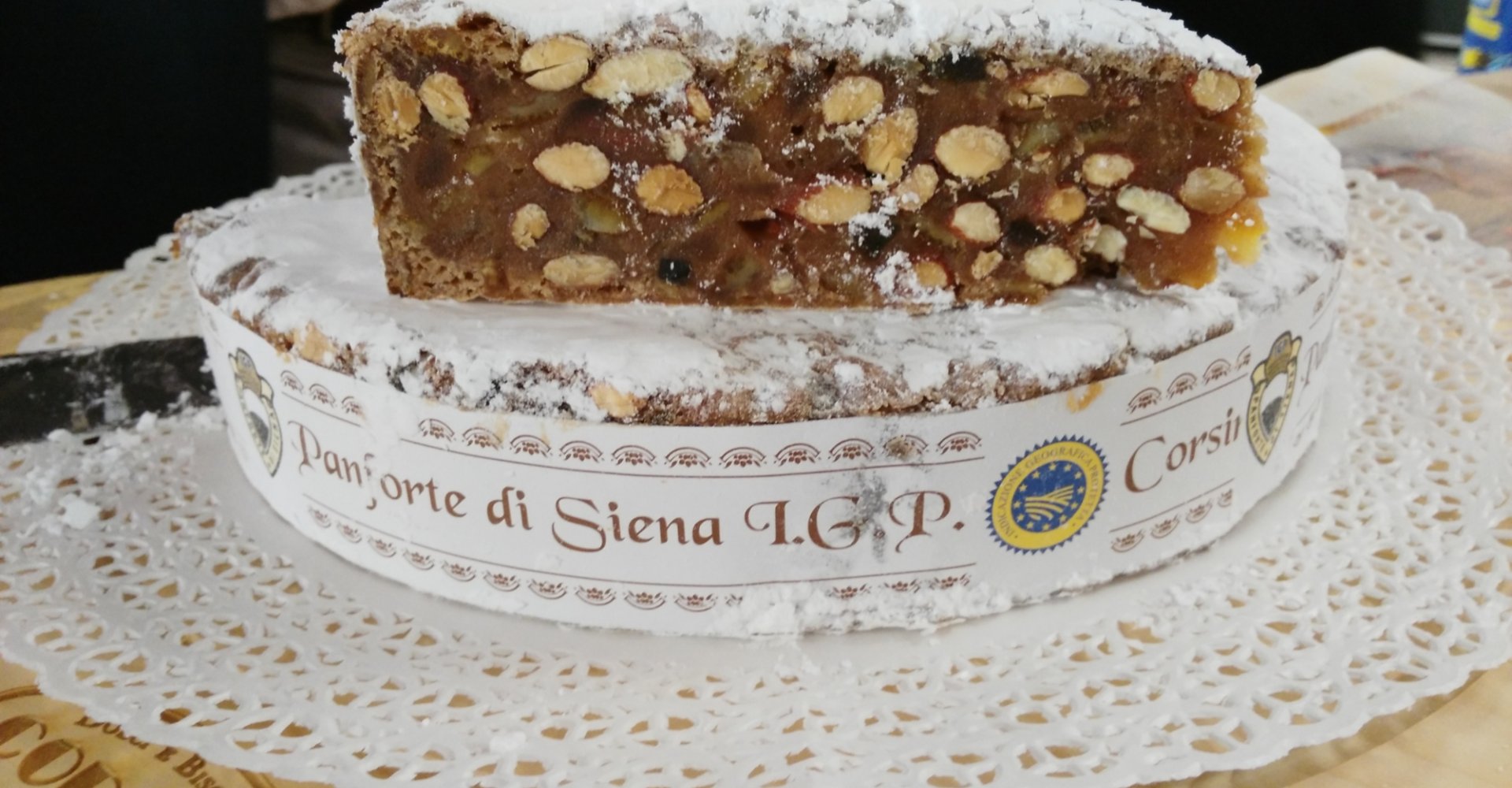Panforte di Siena PGI

History and curiosities about the typical holiday dessert
A symbol of Sienese cuisine, Panforte is a sweet made with dried and candied fruit, honey and spices. It has a long history dating back to medieval times and is typical of the Christmas period, although in Siena it can be found all year round.
There are two versions: white version, if the covering is based on powdered sugar, and black version, if the covering is based on spices.
The area of production and packaging of "Panforte di Siena" includes the entire territory of the province of Siena.
Historical background
The earliest examples of panforte are those loaves rich in pepper and honey that a 1205 chronicle mentions as gifts that servants and colonists were obliged to bring to the nuns of the Abbey of Montecelso, in the province of Siena.
Over time, Panforte established itself as a refined product, offered on tables on important occasions.
The name "Panforte" begins to be attested in the early 1800s.
The first factory producing "Panforte di Siena" dates back to 1810, and also in the 1800s "panforte" was included by Artusi in his seminal text "Science in the Kitchen and the Art of Eating Well" (1891).
The white version has a precise date of birth, 1879, when, in honor of Queen Margherita visiting Siena for the August Palio, the cake was made for the first time with less use of spices and a coating of powdered sugar and was renamed "panforte Margherita". Its immediate success decreed its undisputed fame also under the name "white panforte".
The preparation of "Panforte di Siena" began in September and continued until the end of the year. The cake was then consumed during the Christmas holidays.
Today, "Panforte di Siena" is also made outside the traditional Christmas festivities by several medium-sized industrial workshops and a variety of bakeries and pastry shops scattered throughout the territory.
The earliest examples of panforte are those loaves rich in pepper and honey that a 1205 chronicle mentions as gifts that servants and colonists were obliged to bring to the nuns of the Abbey of Montecelso, in the province of Siena.
Over time, Panforte established itself as a refined product, offered on tables on important occasions.
The name "Panforte" begins to be attested in the early 1800s.
The first factory producing "Panforte di Siena" dates back to 1810, and also in the 1800s "panforte" was included by Artusi in his seminal text "Science in the Kitchen and the Art of Eating Well" (1891).
The white version has a precise date of birth, 1879, when, in honor of Queen Margherita visiting Siena for the August Palio, the cake was made for the first time with less use of spices and a coating of powdered sugar and was renamed "panforte Margherita". Its immediate success decreed its undisputed fame also under the name "white panforte".
The preparation of "Panforte di Siena" began in September and continued until the end of the year. The cake was then consumed during the Christmas holidays.
Today, "Panforte di Siena" is also made outside the traditional Christmas festivities by several medium-sized industrial workshops and a variety of bakeries and pastry shops scattered throughout the territory.



